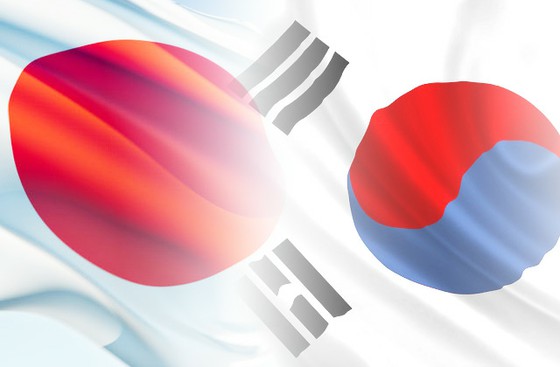 |
The feudal clan under the shogunate (the territory governed by the lords) was so enthusiastic about studying abroad that it sent human resources overseas without being known by the central shogunate. In Japan at that time, a large number of overseas study abroad personnel were active in various fields of society. The Meiji Restoration in Japan can be regarded as nothing more than running on the rails laid by the Shogunate before that.
A group of Joseon Susinsa, represented by Kim Ki Su, lined up in Japan and rang the wind music in order to widely inform them that Korea was a civilized sphere. The scene of passing by by pushing the flag bearer in old-fashioned clothes and ringing the wind music was produced on the modernized Japanese street.
Therefore, Japanese people rushed to see such a strange appearance, which is rare to see in normal times, saying that a spectacle appeared for the first time in a long time. The procession of Joseon Susinsa became such a big show to the Japanese people that the Japanese police were finally mobilized and calmed down. In a nutshell, it wasn't a crowd of welcoming people, but a wave of people trying to enjoy a rare show.
Japanese historian Suguru Sasaki pointed to such a dressed Joseon Susinsa and described it as "an anachronistic happening brought about by the ignorance of Korea in a state of isolation." In addition, a British newspaper reporter stationed in Japan at the time wrote:
"The procession of the Joseon Susinsa marching, dressed traditionally and showing the highest dignity, is a fossil-like line."
By the way, a bigger happening happened. The schedule of the Joseon Susinsa was packed with a tour course because the Japanese side prepared with a large amount of money for the purpose of seeing the state of Japan and promoting modernization as soon as possible and fulfilling the wealthy soldiers who can protect themselves. It was in a state.
However, after inspecting the Japanese Diet Building, the former Senate, the Ministry of the Army, the Ministry of the Navy, the Ministry of the Interior, the Ministry of Education, the Ministry of Finance, the Metropolitan Police Department, etc. And, in effect, rushed into the sabotage.
Shigeru Moriyama, who was in charge of the Ganghwado Treaty, set out to persuade him. Moriyama asked Kim Ki Su why he didn't like to visit. Kimi Su replied:
"Because the tour only makes you tired and there is nothing to benefit you."
Shigeru Moriyama said, "It's good, if it really is, do what you want. But it's a good idea to visit other places, military and industrial facilities. Korea should also be a wealthy soldier as soon as possible. I earnestly suggested.
Inevitably due to repeated appeals from Moriyama, Kim Ki Su's party visited the joint training of Japanese infantry, cavalry, and artillery, as well as the soldier school and the Army artillery main yard. Later, Kim Ki Su wrote about Japan's wealthy soldiers in his own record, "Ildong Base Oil Record."
"For the wealthy soldiers pursued by Japan, it is essential to trade with foreign countries, and if you trade with foreign countries, money will be a pity, supplies will be valuable, and you will surely fail."
Kim Ki Su was convinced that the wealthy soldiers promoted by Japan would fail, and therefore Japan would surely perish.
The delegation of the Joseon Susinsa stayed for a total of 28 days before leaving Japan. At that time, Kim Ki Su said that he was very tired from the schedule in Japan, and at the same time he left Japan, he said, "The Joseon Susinsa should not exceed 15 days in the future."
Gojong asked a few questions with high expectations toward Kim Ki Su, who returned to Korea.
Gojong: If there is anything else to be said in addition to the story (a document in which a Korean official who went abroad and returned to Japan records the contents of the country and reports it to the king), please elaborate. Show me.
Kim Ki Su: There is nothing special to say other than the one that I heard.
Gojong: Japan trades with other countries. Did you see the people of each country?
Kim Ki Su: People in each country are very different, and even if you look at them, you cannot tell which country they are from.
Gojong: Are there any Western scholars in Japan?
Kim Ki Su: I don't know if there is Western studies.
Gojong: Did you see what is called a self-made match?
Kim Ki Su: I couldn't see it. If I saw it, I didn't know it and didn't ask from the beginning.
Gojong: Have you ever heard how Japanese people talk about Japan after seeing it?
Kim Ki Su: I've never heard of it.
Gojong: How was the length of the gun? Was it about a six-hole gun (handgun)?
Kim Ki Su: I couldn't see the six-hole gun.
Gojong asked many questions about Japanese military, soldiers, telegraph, trains, steamships, coin casting, farm equipment manufacturing, etc., but Kim Ki Su's answer was uniformly like this.
-- "I couldn't see it at all. I couldn't remember it suddenly and didn't ask in the first place."
-- "I visited this time to show that I was forced to visit at the request of that side (Japan), and I have never asked about such technology."
(to be continued)
* This article is a Japanese translation of a contribution by Mr. LUDA, a conservative Korean conservative fund. The Korean version has already been published in the Korean media. We are responsible for the accuracy of the translation.
2021/09/07 21:26 KST


